Earliest meeting: Tuesday 25th September 1827
Final meeting: Friday 28th September 1838
Heaton Park is a 600 acre municipal park in Manchester and within its grounds is the Grade I listed Heaton Hall. The park was originally laid out by William Emes in a similar style to Capability Brown, and in 1827 it was used to stage race meetings, the first of which took place on Tuesday 25th and Wednesday 26th September 1827 when the gates were opened to the public and a huge crowd was in attendance. At that inaugural meeting the Heaton Park Stakes was won by Mr White’s Alecto, while the Stanley Stakes went to Falcon who beat Glead and Harriet. Heaton was the Parliamentary seat of the Earl of Wilton, who was a liberal donator to race funds, and he decided to close the gates for the next meeting, effectively barring the working class. The 2nd Earl of Wilton was a keen sportsman and also owned the 1872 St Leger winner Wenlock. At the meeting held in September 1832 the Earl welcomed a special visitor, driving the dwarf Tom Thumb around the course in his carriage. During the 11 years racing was staged the Park, about 5 miles in circumference, was enclosed by a wall and held 3 days racing annually. At the meeting in September 1835 professional jockeys were allowed to compete against gentlemen riders, perhaps an indication that the landed gentry were losing their interest in racing, and certainly were losing their domination. The 1835 meeting also proved to be an important milestone for handicapping, as Squire Osbaldeston believed that the handicapper at Heaton Park favoured the Earl of Wilton and his associate’s horses and set out to prove a point. He began by pulling his 4 year old horse Rush in a trial over the Doncaster St Leger course, which led to him receiving a more generous handicap mark from the Heaton Park handicappers. To compound matters he lost a race at Heaton, at which point Lord George Bentinck, a friend of the Earl of Wilton, offered odds of 200/1 Rush winning the prestigious Heaton Park Stakes. The Squire took those odds, duly won the race and was challenged by Lord George to a duel. In the end both survived the duel, although opinions on handicapping changed forever, and the landed gentry and nobility continued to lose interest in Heaton Park races. Whilst the races were still popular and well-funded, the final day of racing was on Friday 28th September 1838, after which Aintree became the preferred venue. The present day boating lake covers part of the site on which the former racecourse stood.
Earl of Wilton, Lord Westminster, Sir R Bulkeley, Lord Wilton, Sir J Gerard, Captain Brymer
Tuesday 25th & Wednesday 26th September 1827
Heaton Park Stakes over a mile
1. Alecto owned by Mr White
2. White Surrey owned by Mr Grosvenor
3. Clare owned by Mr Hulton
Stanley Stakes over 4 furlongs
1. Falcon owned by Mr Thompson
2. Glead owned by Lord Wilton
3. Harriet owned by Mr White
Heaton Claret Stakes over a mile
1. Glead owned by Lord Wilton
2. Scrub owned by Captain Brymer
3. Armiger owned by Mr Stanley
The painting shown below is of races held at Heaton Park in September 1829
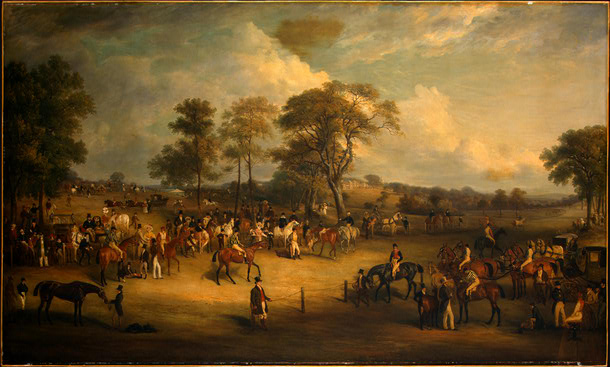
Wednesday 28th to Friday 30th September 1836
The Heaton Park Stakes over 1 ½ miles
1. The Black Diamond owned by Lord Eglinton
2. Jupiter owned by Mr Johnson
3. Azalea owned by Sir R Bulkeley
Heaton Park Gold Cup
1. Touchstone owned by Lord Westminster walked over
Heaton Park St Leger
1. Whaley owned by Mr Robinson
2. Snyders owned by Lord Westminster
3. The Bard owned by Mr Skipsey
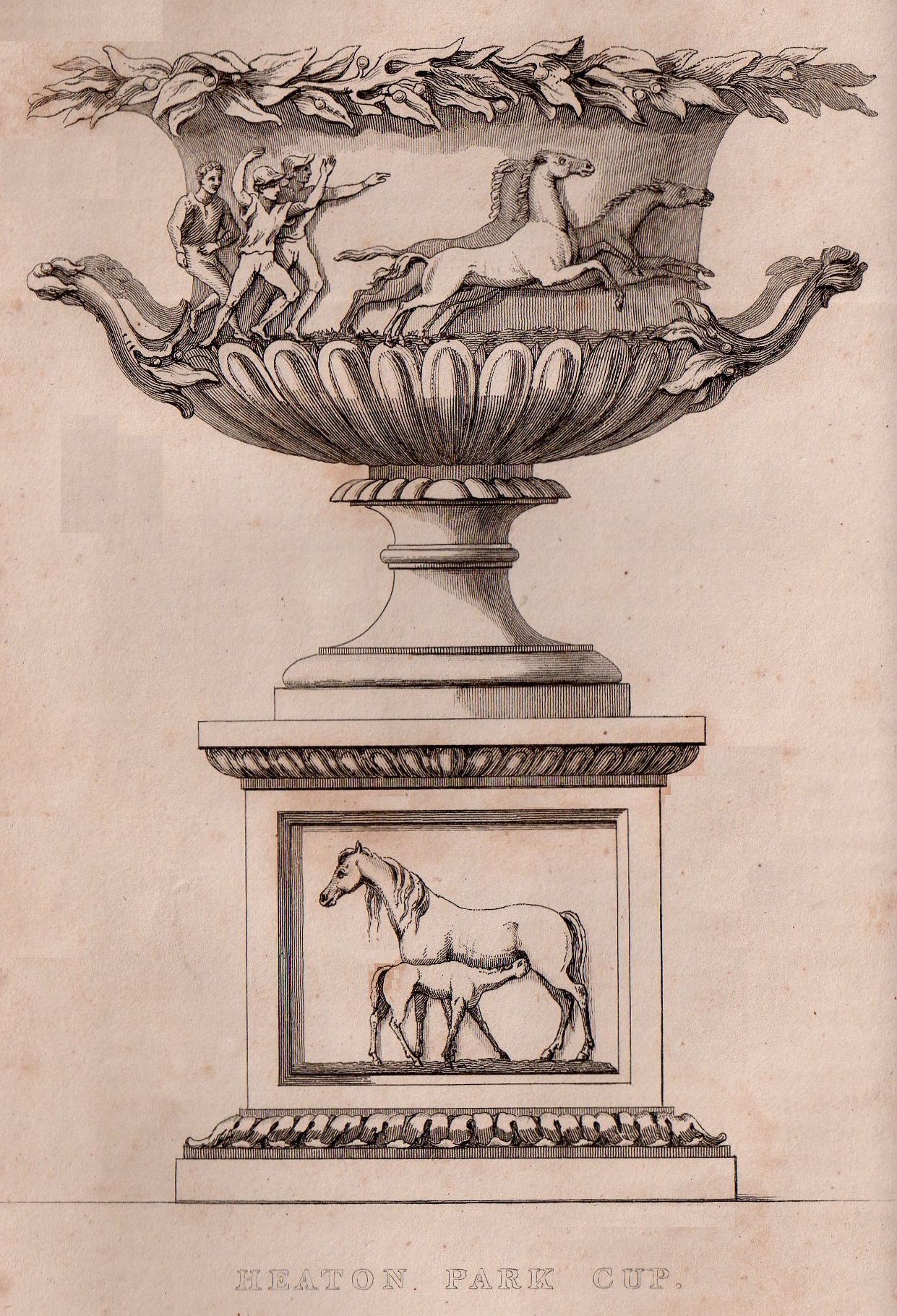
The picture below is one of a series of racehorse paintings by famous sporting artists, including Abraham Cooper, John Ferneley, John Frederick Herring, James Seymour, John Wootton and, perhaps most famous of them all, George Stubbs.
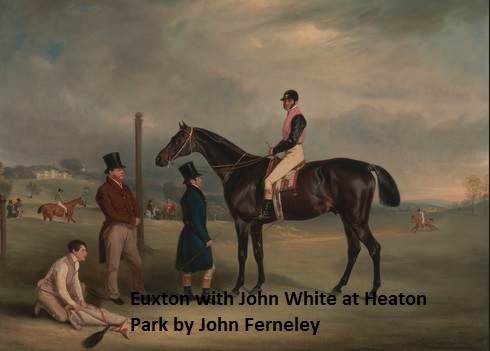
Also included in the painting are Euxton's trainer Robert Simpson and jockey Arthur.
I am grateful to Martin Harper for a number of snippets of information on this section, and for the maps and scans of paintings shown below.
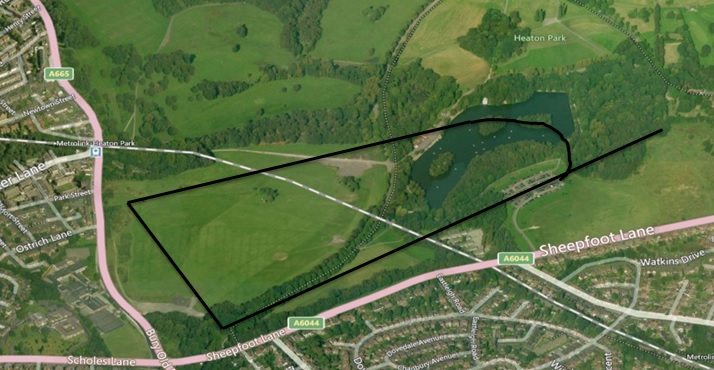
The map shown above is courtesy of the National Library of Scotland 1848.
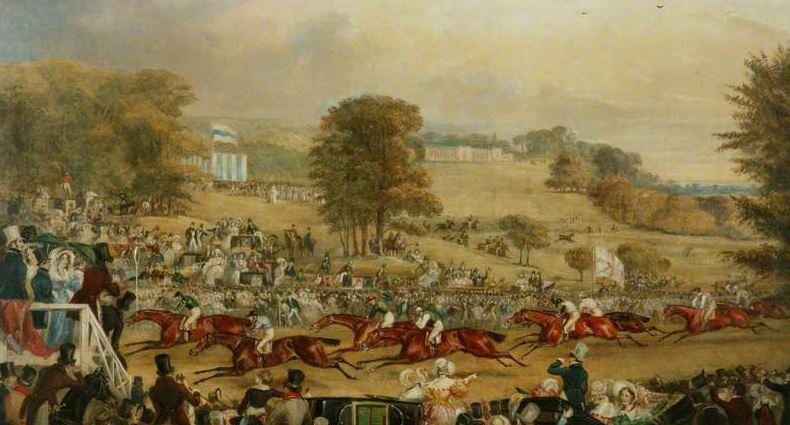
The painting shown above is by Francis Calcraft Turner and shows the controversial September 1835 race at Heaton Park:-
Squire Osbaldeston on Rush
Earl of Wilton on Lady Le Gros
Mr Sirdefield on Giovanni
Mr Kent on Catherina
Count Metuschewitz on Lustre
Captain Becher on Whitefoot
I am grateful to Ordnance Survey (© Crown Copyright) for permission to use the map shown below.
.jpg)
Course Today: Phil Macaulay has provided a map, shown below, which indicates the position of Heaton Hall and the boating lake which partly covers the old racecourse.
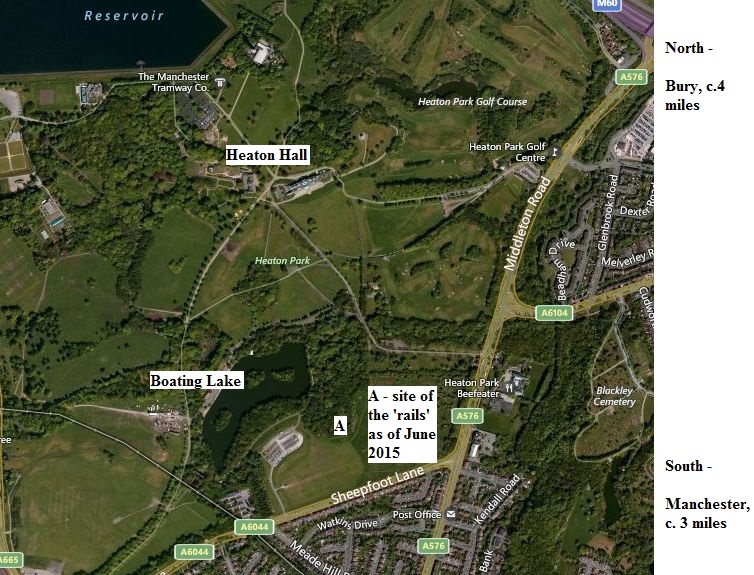
Much of the information about this course has been found using internet research and is in the public domain. However, useful research sources have been:-
London Illustrated News
Racing Illustrated 1895-1899
The Sporting & Dramatic Illustrated
Northern Turf History Volumes 1-4 by J.Fairfax-Blakeborough
The Sporting Magazine
A Long Time Gone by Chris Pitt first published in 1996 ISBN 0 900599 89 8
Racing Calendars which were first published in 1727



